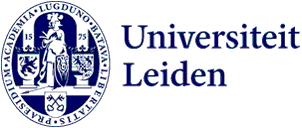
Contested heritage in The Hague: what to do with the remains of the Atlantik Wall?
During World War II, the Nazi’s ordered a coastal defensive line to be built from the south of France to Norway. This Atlantik Wall aimed to defend their territories in continental Europe from an Allied naval invasion. The defensive line went right through the Dutch city of The Hague. The material remains of its fortifications now present a challenge to municipal development. Through an innovative internship, in the format of a workshop, students of the Faculty of Archaeology, together with students from other disciplines, investigated the issue and formulated an advise towards the municipality.
Scars from the past?
Diana Windfeldt-Schmidt, student of the master’s programme in Applied Archaeology, was one of the participants involved in this workshop. ‘The remains of the Second World War count as contested heritage,’ she explains. ‘Especially Nazi fortifications are seen as a scar from the past.’ This is part of the reason that many of its remains in the Dutch city of The Hague have been left at the wayside. ‘This view has been changing over the past years, however.’ The Archaeology Department of The Hague is now interested in the role the Atlantik Wall plays in the city’s spatial planning.
In the internship, Diana worked together with students from different backgrounds. ‘Each group focused on a small part of the Atlantik Wall in The Hague. My group worked on the part in the Haagsche Bos and clingendael, which features many bunkers underground.’ Clingendael was also home to the local German commander, Arthur Seyss-Inquart, who lived in an estate nearby, and had his own safety bunker surrounded by a network of defense bunkers. ‘One of the outcomes of our investigation was that this could be used as a visitor’s centre, in which the history of the area is told. Not in the sense of a museum, but more like an Education center. Stories of the protagonist would be central here, about before, during and after the war.’

Global stories
Diana’s group also looked into making the underground bunkers visible. ‘We proposed to build ghost like statues out of steel wires on top of the bunkers, featuring QR codes that would play a story on your phone. For example, we have this German soldier’s letter about the Allied forces pressuring the front line. He was to be repositioned to Denmark, which makes a direct connection to the Atlantik Wall in a global sense.‘
At the end of the day, an internship should also be a learning experience, and that it certainly was. ‘I learned to better collaborate with other disciplines, like historical architects,’ Diana notes. ‘The ideas differed widely, and it was interesting to see what other people came up with.’

Societal relevance
The development of the internship was done by archaeologist Richard Jansen. ‘This workshop is a collaboration with the Universities of Delft, Wageningen, the Free University of Amsterdam, as well as the LDE Centre for Global Heritage and Development. By joining students of different programmes together, you create an interdisciplinary team. I want to challenge archaeology students to work together with landscape architects, designers, heritage specialists, project developers, and the local government. Archaeology is more than doing archaeology. It is all about the societal relevance.’ in this case it is about the role of (contested) heritage in the development of our present environment
At the end of the workshop, the groups presented their findings to the The Hague authorities. ‘They were very impressed by all of the ideas that the groups came up with,’ Diana summarises. ‘The presentation to the municipality may certainly lead to new policies dealing with this heritage,’ Richard adds. ‘Working on an actual case-study like this makes it even more interesting for students. Students may directly contribute to the solution of societal issues.’
Doing justice to heritage
And what does the municipality have to say about this? ‘The project was very well received by us as a municipality,’ the city’s chief archaeologist Peter Stokkel states. ‘The collaboration between the Faculty of Archaeology and the Archaeology department of The Hague is usually done on a content level and it was very good for me (also as an alumnus of the faculty) to notice that archaeology is no longer taught exclusively as a separate subject. This project showed that archaeology can have an important place in the process of spatial planning. The archaeology students worked well together with students from other disciplines and produced well-founded plans that did justice to heritage.’
